Tell Basta is the site of an ancient city known in Egyptian history as Bubastis and mentioned in the King James version of the Bible (Ez 30:17) as Pibeseth. It was notable for worship of the cat goddess, Bast.
Herodotus, the ancient Greek "father of history," described the town in some detail as it looked around 500 B.C. and had this to say about the festival of Bast where an annual festival drew a crowd of 700,000:
Whoa! Party city. Times have certainly changed in Egypt!
Barges and river craft of every description, filled with men and women, floated leisurely down the Nile. The men played on pipes of lotus, the women on cymbals and tambourines, and such as had no instruments accompanied the music with clapping of hands and dances, and other joyous gestures.
Thus did they while on the river: but when they came to a town on its banks, the barges were made fast, and the pilgrims disembarked, and the women sang, playfully mocked the women of that town and threw their clothes over their head.
When they reached Bubastis, then held they a wondrously solemn feast: and more wine of the grape was drank in those days than in all the rest of the year.
We set out on our trip early in the morning to beat the traffic. We were on the Ring Road by 6:45 as the sun rose. We took our directions from the lady inside my phone who seems to know her way around Egypt just as well as she knows the U.S. Her pronunciation has a distinct American accent, however, and made the Arabic speaking people in the car giggle with delight.
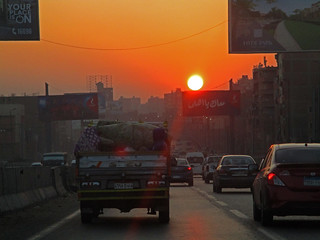
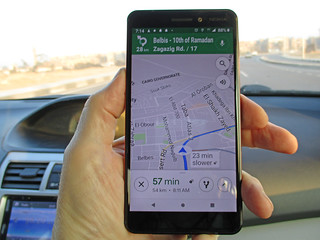
It took just an hour and a half, mostly on very good roads, to reach Tell Basta which lies just outside the modern city of Zagazig. The final few hundred yards were confusing as the GPS route ends in an open field near a police firing range. But, you can see the museum from there across a field of ancient rubble.
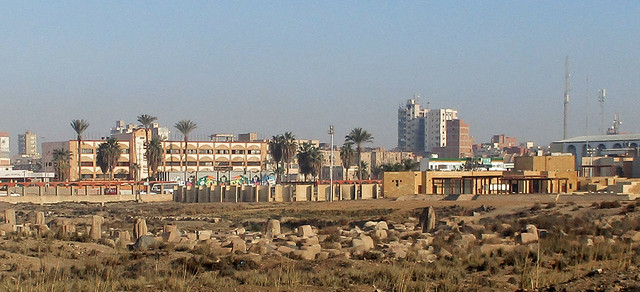
Except for the modern city in the background,the field looks about the same today as it did back in 1887 - 1889 when archeologist Edouard Neville was excavating and photographing the site. (You can download his two books with many photos here and here.)
There is both a standard museum and an open air museum at Tell Basta. The conventional museum opens at 10 a.m. and we had arrived at about 8:30. No problem, the guard opened the gate and he logged us in. Tickets were sold - one for each of us and one for photography - and we began our tour in the outdoor area.
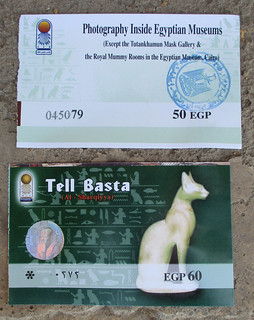
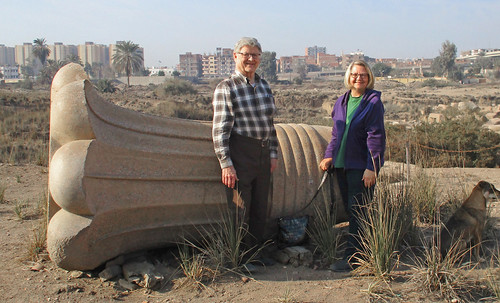
Of course, the outstanding statues that were found here have been shipped off to Cairo, London, Geneva, etc., but what remains is still worth a good look.
At the heart of the the outdoor facility is the large "Queen Statue."
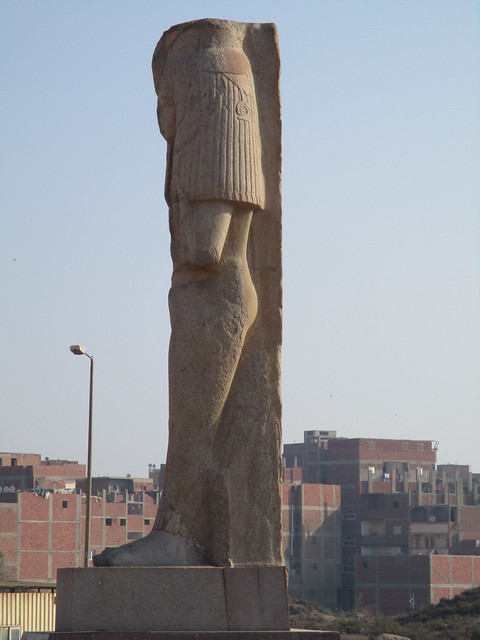
This statue was discovered in the area in 2001. You can see a picture of the whole area under construction with only this statue in place at this blog.
The queen looks like this from the front and back.
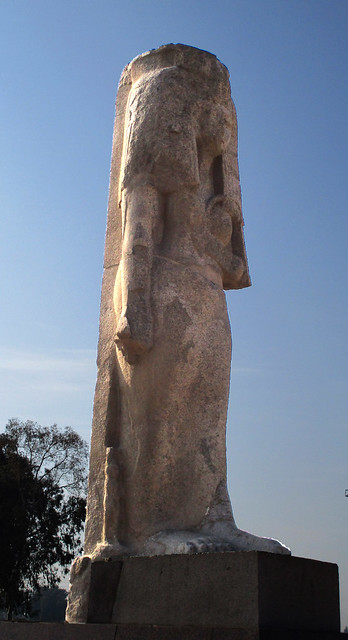
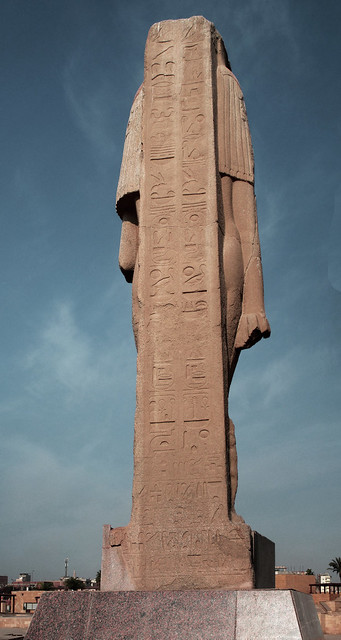
She stands about thirty feet tall and was discovered in two pieces. There is a nice image of the reconstruction found in Egyptian Archeology.
The E.A. article notes that the statue dates to the reign of Ramesses II and probably represents his daughter (and wife) Meritamen. At a later time the statue was usurped by the local king Osorkon II, who modified the inscription on the back to give his own name and that of his wife, Karomama.
Two other statues in the sculpture garden are large and significant. At the top of this ramp, the god Atum and king Ramses VI can be found. Atum is a very old god with a somewhat confused modern sexual identity.
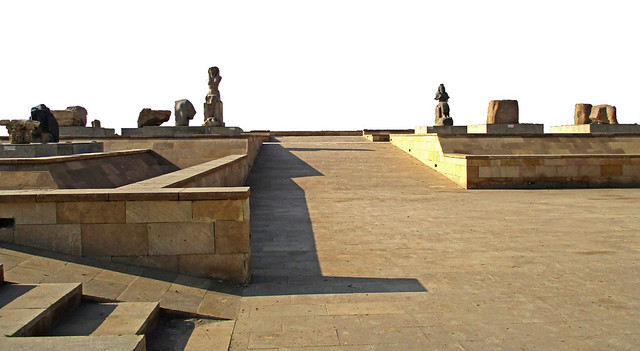
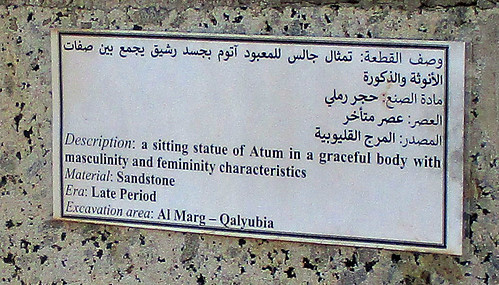
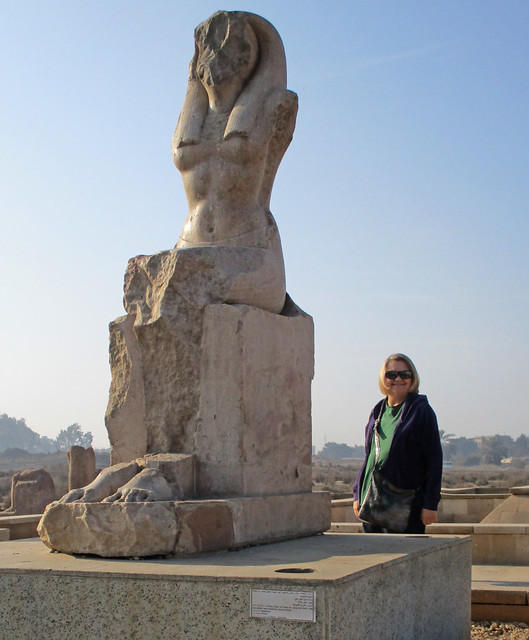
RamsesVI, is a pretty conventional Egyptian King. A large number of statues of him were discovered here and in Tanis, our next stop. This one is notable for the Scarab found on his head.
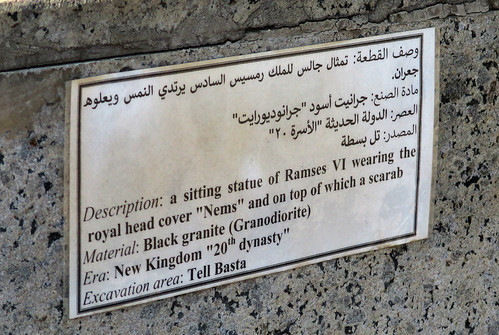
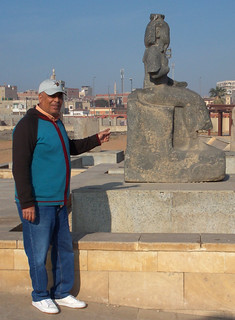
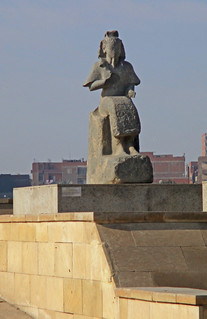
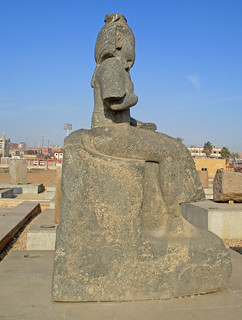
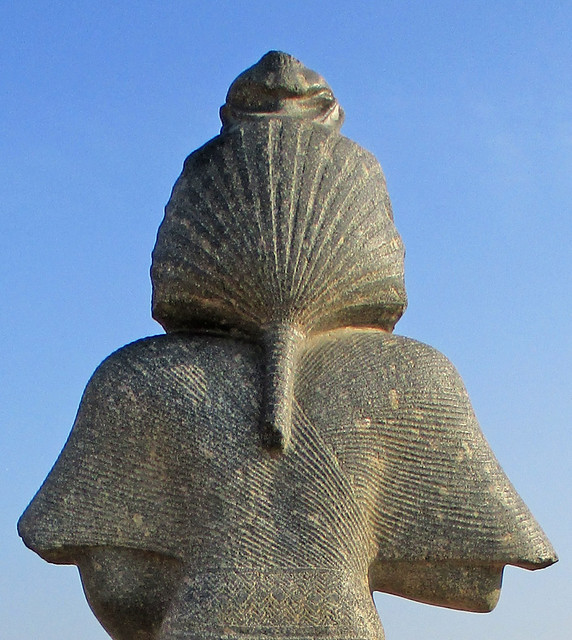
Besides the very ancient pharonic statues and engravings, there is a notable grinder left from the "modern" Greek and Roman era.
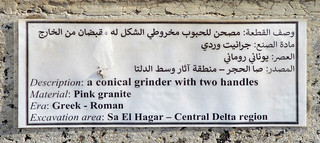
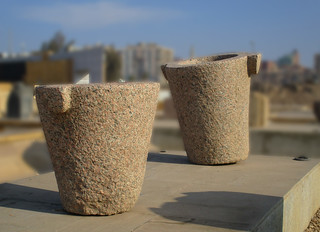
The Tell Basta site has been the focus of a number of explorations but the most extensive was likely the three year project of Edouard Neville in 1877 through 1879. It was closely followed in the London newspapers and those reports were reproduced around the English speaking world.
From The London Times of April 6, 1888 (minor editing applied)
Former operations conducted by the agents of the Egypt Exploration Fund have for the most part been carried on in places remote from the beaten track; but Mr. Neville, by marching his little army of diggers to Tell Basta, has brought his work not only within an easy distance of Cairo, but within a few minutes' walk of Zagazig, the meeting-place of a network of railway lines, and the headquarters of the Egyptian cotton trade.
...The scene is curiously picturesque. Here, grouped together on the verge of the great cemetery of Sacred Cats, are the tents of the officers of the Fund; yonder, swarming like bees at the bottom of the huge crater-like depression which marks the area of the temple, are some 300 to 400 laborers:Excavation and discovery at Tell Basta continues.
With so many hands at work and so many overseers to keep them going, it is not surprising that the excavations make rapid progress.
- diggers in the trenches and pits, basket carriers clearing away the soil as it is thrown out,
- overseers to keep the diggers at work,
- "pathway men" to keep the paths open and the carriers moving,
- gangs of brawny "Shayalin," or native porters, harnessed together by stout ropes. and hauling or turning sculptured blocks which have not seen the light for many centuries,
- girls with bowls of water and sponges, to wash down the carved surfaces preparatory to the process of taking paper "squeezes",
- and small boys to run on errands, help with the measuring tapes, and keep guard over the tents and baggage.
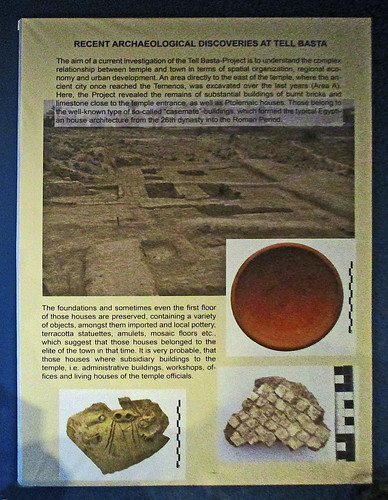
There was still a crew at work in the area when we visited. It was much smaller in size and, while it doesn't show in this photo, "the girls" now seem to be in charge as overseers.

In the background of that picture, you can see the police on their nearby firing range. Part of the problem in acquiring land for the current Tell Basta museum was a reluctance on the part of the police to give up this range.









No comments:
Post a Comment